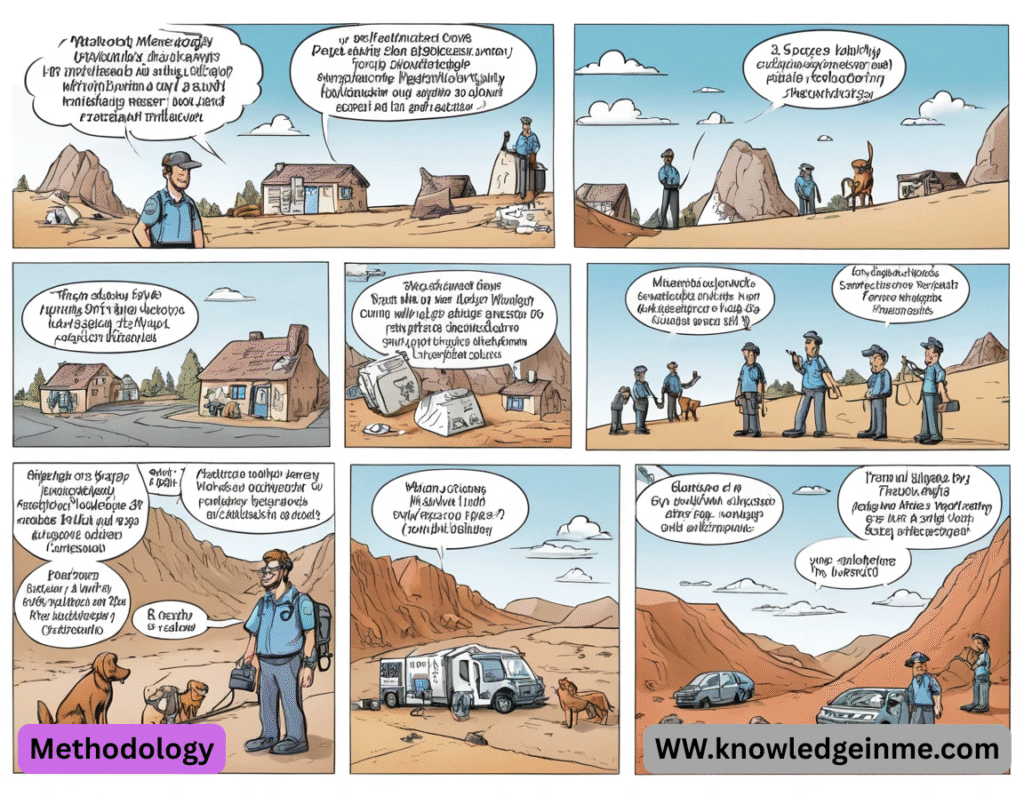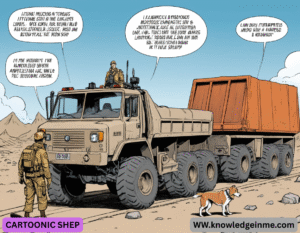Methodology The methodology section outlines the systematic approach used to conduct research or achieve a project’s objectives. It includes the research design, data collection methods, analysis techniques, and tools used.
Research Design
- Type of Study: Qualitative, quantitative, or mixed-methods.
- Approach: Experimental, observational, case study, survey-based, etc.
- Justification: Why this design is suitable for addressing the research problem.
Data Collection
- Sources: Primary (surveys, interviews, experiments) or secondary (databases, literature).
- Sampling Technique: Random, stratified, convenience sampling, etc.
- Tools & Instruments: Questionnaires, sensors, software, lab equipment.
- Ethical Considerations: Consent, confidentiality, compliance with institutional guidelines.
Data Analysis
- Quantitative Methods: Statistical tests (regression, ANOVA), machine learning models.
- Qualitative Methods: Thematic analysis, content analysis, discourse analysis.
- Software/Tools: SPSS, Python/R, NVivo, Excel.
Validation & Reliability
- Accuracy Checks: Triangulation, peer review, cross-validation.
- Limitations: Potential biases, constraints, and how they were mitigated.
Implementation if applicable
Steps taken to apply findings (e.g., pilot testing, deployment in real-world scenarios).
Research Design
Type of Study:
- Exploratory (if investigating a new phenomenon).
- Descriptive (if summarizing characteristics).
- Experimental (if testing cause-effect relationships).
Approach:
- Qualitative (interviews, case studies, textual analysis).
- Quantitative (statistical modeling, surveys, experiments).
- Mixed-Methods (combining both approaches).
- Rationale: Why this design best addresses the research objectives.
Data Collection
Data Sources:
- Primary Data: Collected firsthand (surveys, lab experiments, interviews).
- Secondary Data: Existing datasets, literature, public records.
Sampling Strategy:
- Probability Sampling (random, stratified) for generalizability.
- Non-Probability Sampling (purposive, snowball) for niche studies.
Instruments & Tools:
- Surveys (Google Forms, Qualtrics).
- Sensors, lab equipment (for scientific studies).
- APIs, web scraping (for data-driven research).
Ethical Considerations:
- Informed consent, anonymization, IRB approval (if human subjects are involved).
Data Processing & Analysis
Data Cleaning:
- Handling missing values, outliers, normalization.
Analytical Techniques:
- Quantitative: Regression, hypothesis testing, machine learning (e.g., Python/R).
- Qualitative: Thematic coding, grounded theory (e.g., NVivo).
Software/Tools:
- Statistical: SPSS, STATA, Excel.
- Programming: Python (Pandas, SciPy), R, MATLAB.
- Visualization: Tableau, Matplotlib, Power BI.
Validation & Reliability
- Internal Validity: Ensuring no confounding variables skew results.
- External Validity: Assessing generalizability to broader populations.
Reliability Checks:
- Test-retest, Cronbach’s alpha (for surveys).
- Cross-validation (for predictive models).
Limitations & Mitigations:
- Acknowledging biases (selection bias, measurement errors) and steps taken to minimize them.
Implementation If Applicable
- Pilot Testing: Small-scale trials before full deployment.
- Execution: How findings were applied (e.g., A/B testing in marketing, prototype testing in engineering).
Case Study Example Structure
- For applied research (e.g., business, software development):
- Agile/Waterfall Methodology (for software projects).
- PDCA Cycle (Plan-Do-Check-Act for continuous improvement).
- Field Experiments (e.g., user testing for UX research).
- Comprehensive Methodology Guide
Research Philosophy Paradigm
What worldview guides your research?
- Positivism (Quantitative, objective facts, e.g., physics).
- Interpretivism (Qualitative, subjective meanings, e.g., anthropology).
- Pragmatism (Mixed-methods, problem-solving focus).
Research Design
Study Type
Type Purpose Example
Exploratory Uncover new insights Pilot study on AI ethics
Descriptive Profile characteristics Census data analysis
Experimental Test cause-effect relationships Drug efficacy RCT
Case Study In-depth analysis of a case Tesla’s market strategy
Time Horizon
- Cross-sectional: Data collected at one time (e.g., election polls).
- Longitudinal: Data over time (e.g., 10-year health study).
Template:
- A descriptive, cross-sectional design was used to analyze customer satisfaction trends in Q2 2024.”*
Data Collection
Methods
Method Pros Cons
Surveys Scalable, quantitative Response bias
Interviews Rich insights Time-consuming
Observation Natural behavior Observer bias
Experiments High validity Artificial setting
Sampling Techniques
- Probability Sampling (Random, Stratified) → Generalizable results.
- Non-Probability Sampling (Convenience, Snowball) → Quick, niche data.
Example:
- Stratified random sampling ensured proportional representation of age groups (18–25, 26–40, 41+).”*
Tools
- Qualitative: NVivo, ATLAS .TI (for coding interviews).
- Quantitative: Google Forms, Qualtrics, Lab equipment.
Data Analysis
Quantitative Analysis
- Descriptive Stats: Mean, SD, histograms.
- Inferential Stats: t-tests, ANOVA, regression.
- Machine Learning: Clustering, NLP, predictive modeling.
Example:
- “A multiple linear regression (Python’s Scikit-learn) tested if income and education predict home ownership.”
Qualitative Analysis
- Thematic Analysis: Identifying patterns (e.g., interview transcripts).
- Content Analysis: Quantifying text data (e.g., social media posts).
Validation & Rigor
Concept Quantitative Approach Qualitative Approach
Validity Construct validity (CFA) Member checking
Reliability Cronbach’s alpha (>0.7) Inter-coder reliability
Generalizability Large sample size Thick description
Example:
- To ensure reliability, two researchers independently coded interviews, achieving 85% inter-coder agreement.”*
Ethical Considerations
- Informed Consent: Participants must opt in.
- Anonymity: No identifiable data (e.g., replace names with IDs).
- IRB Approval: Required for human/animal studies.
Template:
- “Ethical approval was obtained from [Institution]’s IRB (#12345). Participants signed consent forms and could withdraw anytime.”
Limitations & Mitigations
Common Limitations:
- Small sample size → Use non-parametric stats.
- Self-report bias → Triangulate with observational data.
- Field-Specific Customizations
Computer Science (AI/ML)
- Data: ImageNet, Kaggle, or web scraping.
- Methods: Train-test splits, hyperparameter tuning.
- Tools: PY Torch, Tensor Flow, Weka.
Social Sciences
- Methods: Focus groups, discourse analysis.
- Theory: Apply frameworks like SWOT or PESTEL.
Clinical Research
- Design: Double-blind RCTs.
- Tools: RED Cap, CONSORT checklist.
Real-World Example
- Study Title: “Impact of Remote Work on Productivity”
- Design: Mixed-methods (survey + interviews).
- Sampling: 500 employees (random) + 20 manager interviews.
Analysis:
- Quantitative: Paired t-test (pre/post remote work).
- Qualitative: Thematic coding of interview transcripts.
- Advanced Methodology Blueprint
Philosophical Underpinnings Deep Dive
- Critical Realism (Hidden structures influence observable phenomena)
- Post-Positivism (Probabilistic causality, common in health sciences)
- Constructivism (Reality is socially constructed)
Pro Tip:
“In complex systems research, adopt a critical realist stance to examine both observable patterns and underlying mechanisms.”
Cutting-Edge Research Designs
- Delphi Method (Expert consensus-building through iterative rounds)
- Ethnography 2.0 (Digital ethnography for online communities)
Quasi-Experimental Designs:
- Regression Discontinuity
- Difference-in-Differences
- Instrumental Variables
Example from Economics:
“A difference-in-differences design compared policy impacts between treatment and control states, controlling for pre-trends.”
Advanced Sampling Strategies
- Respondent-Driven Sampling (For hidden populations)
- Maximum Variation Sampling (In qualitative research)
- Sequential Mixed Sampling (QUAN → qual follow-up)
Case Study:
“To study cryptocurrency traders, we used snowball sampling initiated through Reddit forums, verifying identities through wallet signatures.”
Next-Gen Data Collection
- Biometric Data (EEG, eye-tracking, galvanic skin response)
- Web Scraping Ethics (Robots.txt compliance, rate-limiting)
- Satellite Imagery Analysis (For environmental studies)
Sophisticated Analysis Techniques
- Bayesian Statistics (For small samples with priors)
- Structural Equation Modeling (Latent variable analysis)
- Qualitative Comparative Analysis (QCA for configurational causality)
Nuclear-Level Research Design
Hybrid Designs
- Sequential Transformative (QUAL → QUAN → QUAL)
- Concurrent Nested (Dominant QUAN with embedded QUAL)
- Multiphase (5-year program with staggered methods)
Experimental Protocols
- Triple-Blind Trials (Participants/researchers/statisticians blinded)
- Waitlist Adaptive Designs (For clinical interventions)
- Digital Twin Methodologies (For engineering simulations)
Emerging Designs
- Decolonized Research Frameworks (Indigenous methodologies)
- Dark Data Archaeology (Recovering hidden datasets)





